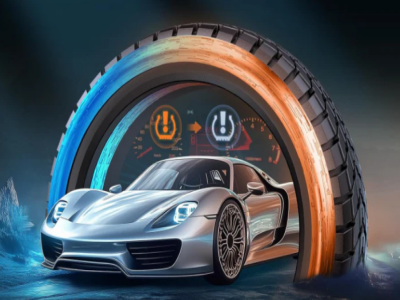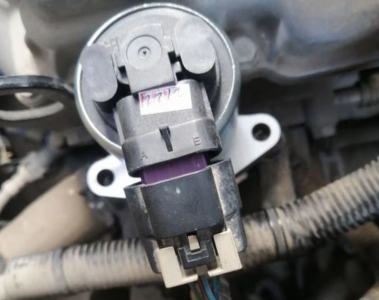A Heavy-Duty Scanner That Works the Way You Do
Downtime burns money faster than fuel. Dealer queues don’t move for your delivery window, and “wait until the laptop’s free” isn’t a plan when a warning light pops up miles from a bay. That’s why more owner-operators, small fleets, and mobile techs keep a truck scanner tool in the cab. Not to replace OEM software, but to turn a light into a decision before the day unravels.
The Foxwell HD500 lives in that space. It’s a heavy duty truck scanner with dpf regen built for daily decisions, not lab demos. Quick triage, a few high-value service routines, and live data that actually tells a story. It’s not about chasing dealer-level depth, it’s about doing the jobs you need most, fast, and doing them well.

Foxwell HD500 at a Glance: What It Is, What It Does
The Foxwewll HD500 runs on Android 9.0 with 2GB of RAM and a quad-core processor, giving it the speed to boot in seconds and handle multiple live data streams without lag meaning you can get straight to diagnosis without watching a loading screen. A 5.5-inch daylight-readable touchscreen stays clear even in direct sun and still responds with dusty or lightly gloved hands, so you’re not fighting the interface when you should be fixing the problem.
Updates install over Wi-Fi, whether connected directly or through a phone hotspot, so you’re not tethered to a PC just to stay current. Built-in screenshot and PDF report functions let you document findings for customers or fleet managers, and remote access via TeamViewer or AnyDesk means another tech can take a look without shipping the tool across the country.
The kit includes the adapters you’ll actually use. The common 16-pin OBD-II plus standard 6-pin and 9-pin diesel connectors, along with Caterpillar round adapters for models like the C13 and C15. Cables seat with a solid click, which matters more than you think when a worn port might drop communication mid-procedure.
On the network side, it speaks the heavy-duty languages you see every day: SAE J1939, J1708/J1587, and the usual ISO stacks, so it talks to real-world rigs from Cummins, Detroit Diesel, Paccar, International, Volvo, Mack, and Hino. This makes it a reliable international truck diagnostic scanner for fleets that operate across mixed brands, ensuring consistent performance even with International’s diverse model lineup.
If you want to dive deeper into how OBD2 tools work specifically for diesel vehicles—like understanding protocol differences (e.g., J1939 vs. standard OBD2) or how to pick the right functions for your truck—check out our diesel obd2 scanner guide: Guide to OBD2 Scanners for Diesel Vehicles. Coverage still varies by ECU and model year, so a quick VIN check before you start is always smart.
If your week strays off the highway, the overlap helps. Because the tool rides the same networks, it can pull duty as a heavy equipment diagnostic tool when controllers match. It is not a promise to cover every machine. It is a practical bonus that shows up on job sites and in farm yards.
➤ Foxwell HD500 Heavy Duty Scanner Tool
Where This HD Scanner Pays Off
A few everyday jobs are where this unit proves its worth. These are the moments when a warning light turns into a clear plan, without unnecessary drama.
DPF Soot Load Creeping Up
Power feels flat, the message pops, and a derate is not far away. When coolant temperature, park brake, fuel level, and interlocks are all green, the HD500 walks you through a forced regeneration and lets you watch soot load and differential pressure trend down in real time. Seeing the numbers move the right way beats waiting for a single “complete” message and usually gets the truck back on schedule.
SCR Efficiency (P20EE) After a Highway Pull
An efficiency code does not always mean a dead catalyst. Pair NOx upstream with NOx downstream and confirm DEF dosing behavior. If a sensor is drifting rather than the aftertreatment falling short, you fix the right thing first and keep the day intact. That is heavy duty truck diagnostics doing what it should. Evidence before expense.
Rough Idle With No Injector Code
When an engine shakes but will not flag a cylinder, the injector cutoff test disables each hole in turn so you can watch the RPM change. The quiet one identifies itself. You authorize one injector, not six, and the estimate makes sense to anyone reading it.
ABS Service With a Soft Pedal
After a pump or module swap, the bleed routine cycles the unit and purges trapped air so pedal feel comes back before the road test. Not glamorous, but it prevents comebacks and closes the job cleanly.
Governed Speed Adjustments (When the ECU Allows It)
Cross-border runs and policy changes make speed limits a moving target. On controllers that permit edits, you can read and set the limit when the vehicle is stationary. Some ECUs are locked by design. Follow fleet policy and local rules, and check permissions up front.
DPF Regeneration Made Simple
When soot builds up in the diesel particulate filter, the HD500 guides you through a forced regeneration process. You can monitor soot load and differential pressure in real-time, ensuring the regeneration is effective and the engine stays on schedule. This feature prolongs DPF life, reduces maintenance costs, and avoids unexpected derates on the road.
Field Workflow: From Light to Plan
When a light pops on, you don’t need drama, you need a sequence you can run every time. Here’s a simple flow that keeps you focused and gets you to a decision without rushing.
1. Start with a full scan: Run an automatic scan, note both active and pending faults, and save a snapshot. That gives you a clean “before” picture you can compare against later.
2. Open the data that matters: Go into the module that set the code and bring up live data. Pair signals that tell a story together, boost with fuel-rail pressure, EGR position with MAF, NOx upstream with NOx downstream, so you’re watching cause and effect instead of chasing a single number.
3. Confirm readiness if it’s aftertreatment: Make sure the basics are green, coolant at operating temperature, park brake engaged, enough fuel in the tank, interlocks clear, and a safe, ventilated spot to work. Skipping this step is how you lose time.
4. Take the right action: If the truck is ready, start the guided procedure and watch soot load and differential pressure move steadily in the right direction. If it isn’t ready, clear non-critical items, take a short drive while graphing the same paired signals, and then recheck so you’re not guessing.
5. Close the loop: Re-scan, compare to your snapshot, and save a short report. With that, you can choose to keep rolling and monitor or plan a controlled stop. This is how a good hd scan tool turns a warning light into a calm, defensible plan.
Limits to Note
The HD500 is built for mid-market practicality, not dealer-level depth, and there are a few boundaries worth knowing before you count on it for every job. It won’t handle variable-geometry turbo calibrations or other bidirectional functions, so on certain components you’ll be limited to monitoring rather than executing commands.
DPF regeneration is also brand-dependent, with no coverage on Isuzu, and governed-speed adjustments won’t work on most Cummins engines. Coverage still varies across makes, models, and years, and there are known blind spots, including some 2015-2017 Mack trucks, engines like the D13, MP8, and MP7 families, and Cummins CM2150 or 6.7-liter series controllers.
These aren’t flaws unique to the HD500, but they’re limits you’ll want to call out early with a quick VIN check. Being upfront about what it can’t do protects trust and saves time – two things this scanner is designed to preserve.
Bottom Line
If you manage trucks for a living, clarity beats clever every time. The HD500 delivers a practical version of that: a heavy duty truck scanner with dpf regen that boots quickly, speaks the networks you use, and helps you make the next right move.
For owner-operators, small fleets, and mobile techs who want dependable heavy duty truck diagnostics – with a bit of crossover as a heavy equipment diagnostic tool when controllers line up – it’s a sensible, carry-every-day hd scan tool. It won’t replace a dealer laptop, and it doesn’t pretend to. What it does is often enough; give you the right information, at the right moment, so the truck finishes the day and the week still adds up.
FAQs
1 Does the HD500 support my vehicle?
The Foxwell HD500 is designed to support most mainstream heavy-duty diesel vehicles, including CAT, CUMMINS, PACCAR, DETROIT, INTERNATIONAL, HINO, FORD, and CHRYSLER, covering essential systems such as engine, ABS, SRS, EPB, and DPF.
Some advanced functions, however, may be limited depending on your vehicle’s model, year, or ECU protocol, including:
-
DPF Regeneration: Not supported on certain brands, such as some Isuzu models.
-
Injector Cutoff Test: Availability depends on engine compatibility.
-
Speed Limit Setting: May not be available on specific Cummins ECUs or certain model years.
To ensure all desired functions work seamlessly, we strongly recommend providing your vehicle brand, model, year, or VIN to Foxwell customer support before purchase.
Even if some advanced functions are unavailable, the HD500 still delivers full OBD/OBD2/EOBD functionality, including reading and clearing fault codes, as well as real-time data monitoring.
Confirming compatibility in advance ensures you get the most out of your HD500 and enjoy a smooth, hassle-free diagnostic experience.
2 Can the HD500 Perform DPF Regeneration on All Vehicles?
DPF regeneration is one of the most important functions for users.
The HD500 supports most heavy-duty diesel vehicles, but certain brands or models (e.g., some Isuzu vehicles) may not be supported.
During the regeneration process, the HD500 monitors particulate matter and differential pressure in real time, ensuring a safe and effective regeneration.
Before performing DPF regeneration, make sure the vehicle is in proper condition: coolant level, fuel level, parking brake, and other requirements are met.
We strongly recommend confirming vehicle compatibility before initiating DPF regeneration.
3 Are the Other Special Functions of the HD500 Compatible with All Vehicles?
-
Injector Cutoff Test: Availability depends on engine compatibility.
-
Speed Limit Setting: May be restricted on certain Cummins ECUs or specific model years.
-
ABS Bleeding / ABS Reinitialization: Supported on most vehicles, but must follow proper safety procedures.
Even if some special functions are limited, the HD500 still performs standard fault code reading, clearing, and live data monitoring, ensuring all essential diagnostic needs are covered.
4 What Should I Keep in Mind When Using the HD500?
-
Function coverage may vary depending on vehicle model, year, and ECU protocol.
-
Before performing DPF regeneration, injector cutoff, or speed limit setting, ensure the vehicle is in proper condition and meets all safety requirements.
-
It is recommended to operate in a safe, well-ventilated area and to save vehicle scan data and reports in advance.





Leave a comment
This site is protected by hCaptcha and the hCaptcha Privacy Policy and Terms of Service apply.